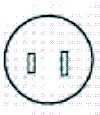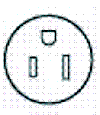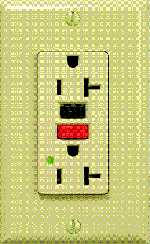Knob and Tube Wiring in Apartments
Article
by Ted Olechna
Knob and tube wiring, more recently referred to as open
wiring, was a wiring method used in the early 1900s to
1940s in the residential dwelling sector. Over the years
wiring installation practices have changed in the residential
sector and knob and tube wiring is no longer installed;
however, parts continue to be available for maintenance
purposes.

Typical knob and tube installation
Existing knob and tube conductors concealed in walls,
floor spaces, etc; supplying general lighting and receptacle
circuits are permitted to remain in place if:
· They are protected by a 15 ampere fuse or circuit
breaker; and
· No additional outlets have been added to the
original installation so as to overload the circuit; and
· The conductors, where visible, appear to be in
good condition.
If your apartment building has knob and tube wiring, we
recommend that you follow these guidelines:
· Arrange for a qualified electrical contractor
check the “knob and tube” conductors in your
existing installations for sign of deterioration and damage;
or request a general inspection from ESA. The General
Inspection report will identify visible electrical safety
concerns in your electrical wiring.
· “Knob & tube” conductors should
be replaced where exposed conductors show evidence of
mechanical abuse and or deterioration, poor connections,
overheating, alterations that result in overloading, or
if changes to wiring contravene any section of the Ontario
Electrical Safety Code.
Knob and tube wiring may not have the electrical capacity
to meet today’s needs. As a result, modifications
may have been made to the electrical system with what
the Electrical Safety Authority classifies as unsafe practices:
· Improper use of extension cords – using
improperly rates extension cords, or using extension cords
as permanent wiring;
· Improper fuse replacement – using 20 or
30 amp fuses to replace15 amp;
· Improper connections - adding receptacles and
outlets on existing circuits or improperly connecting
to the knob and tube wiring (this work should be done
by a qualified electrician);
· Removing ground pins – ground pins on power
bars or electrical equipment should not be removed to
accommodate the two pin receptacles used in knob and tube
wiring (2 pin to 3 pin are not permitted)
· Improper replacement of two pin receptacles.
If you require a three prong receptacle, only use a GFCI
receptacle
Where grounding type receptacles (three
pin) are used in existing knob and tube installations
to replace the ungrounded type (two pin) receptacle special
caution must be exercised. Rule 26-700 (8) permits a Ground
Fault Circuit Interrupter (GFCI) type of receptacle to
be installed on an ungrounded circuit without a bonding
conductor, this is the preferred method. Rule 26-700(7)
provides a second option which permits the installation
of an external bond conductor to the system ground conductor
or metallic cold water pipe if they are bonded to ground.
This method is not as desirable and may be difficult to
accomplish.
Two Pin (ungrounded)

Three Pin (Grounded)

Ground Fault Circuit Interrupter (GFCI) type of receptacle

As new electrical equipment is introduced into the dwelling unit there might be a need for additional outlets to be installed. Extension cords are not to be used as a substitute for permanent wiring. The following shall be followed when installing new receptacles:
· Outdoor receptacles should be GFCI protected,
· Bathroom and washroom receptacles shall be GFCI protected.
· Kitchen receptacles within 1 meter of a sink shall be GFCI protected
· New outlets shall follow the current Ontario Electrical Safety Code requirements for wiring, meaning a new branch circuit shall be grounded and receptacles that utilize the three pin grounded configuration listed in Diagram 1.
While knob and tube conductors in good condition and has
not been inappropriately altered will not present undue
hazards it is worth noting that modern electrical installations
contain safety benefits not found in older electrical
systems.
These include:
· Generally larger electrical capacity and more
electrical circuits reducing the need to use extension
cords
· Splices and joints made in approved electrical
boxes
· Dedicated electrical circuits for certain types
of electrical equipment or appliances
· Grounded and bonded receptacles, switches and
light fixtures
· Ground fault circuit interrupters in bathrooms
and outdoor locations
And with the latest edition of the Ontario Electrical
Safety Code
· Arc Fault Circuit Interrupters in bedroom receptacle
circuits
· And GFCIs near kitchen sinks.
Anyone planning to modify knob and tube wiring, or any other electrical wiring, should have the work performed by a licensed electrical contractor or electrician and arrange for an electrical inspection by Electrical Safety Authority.



